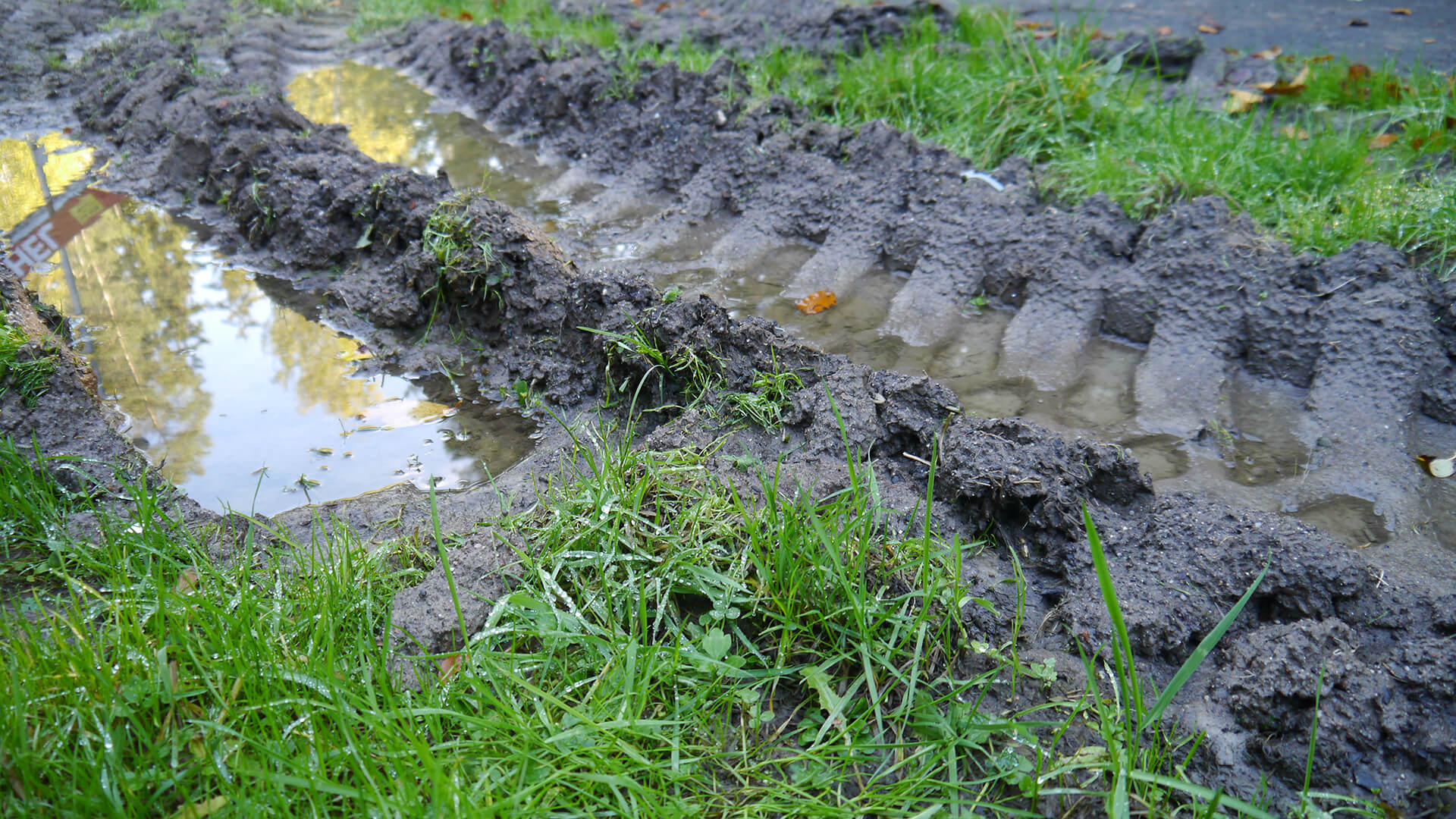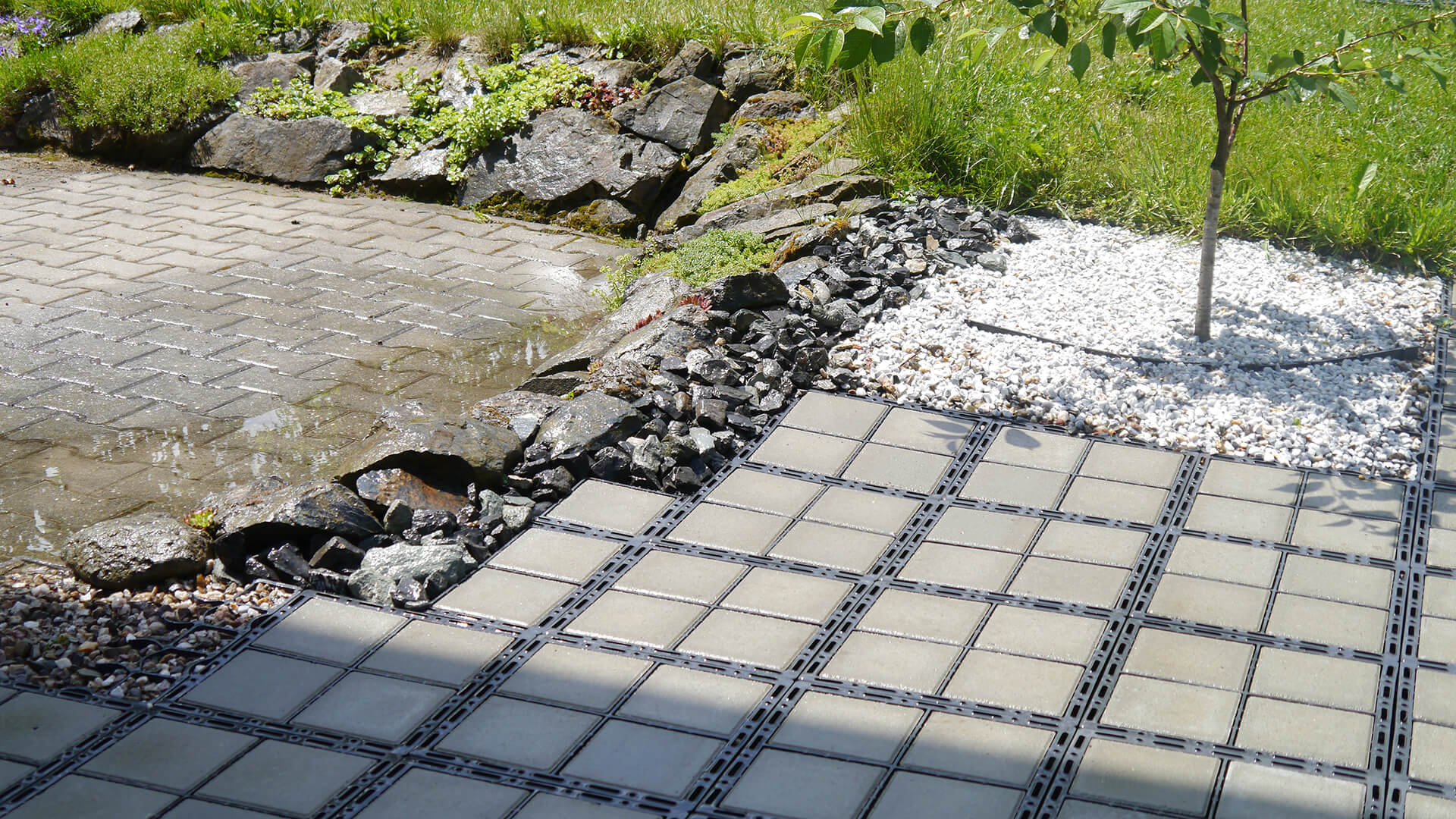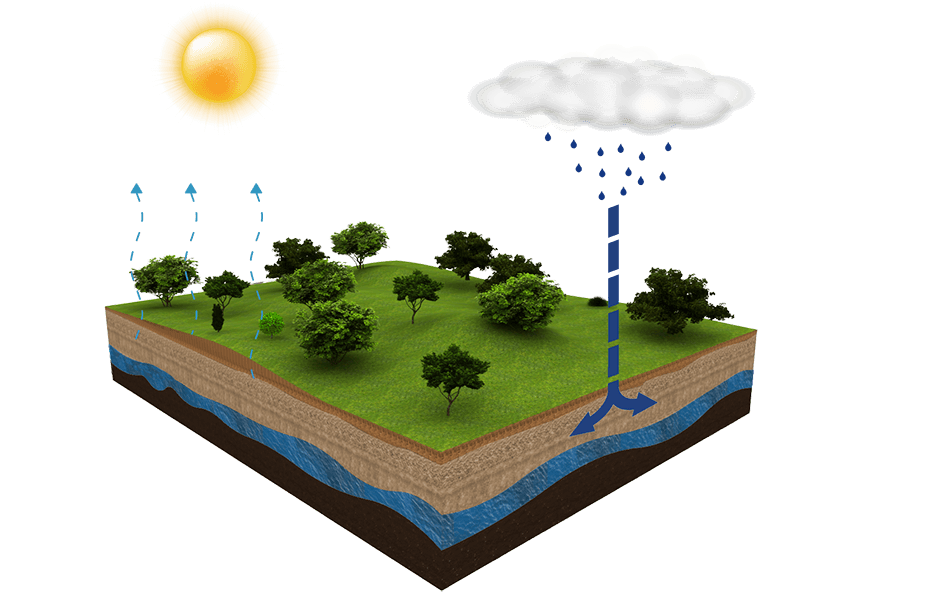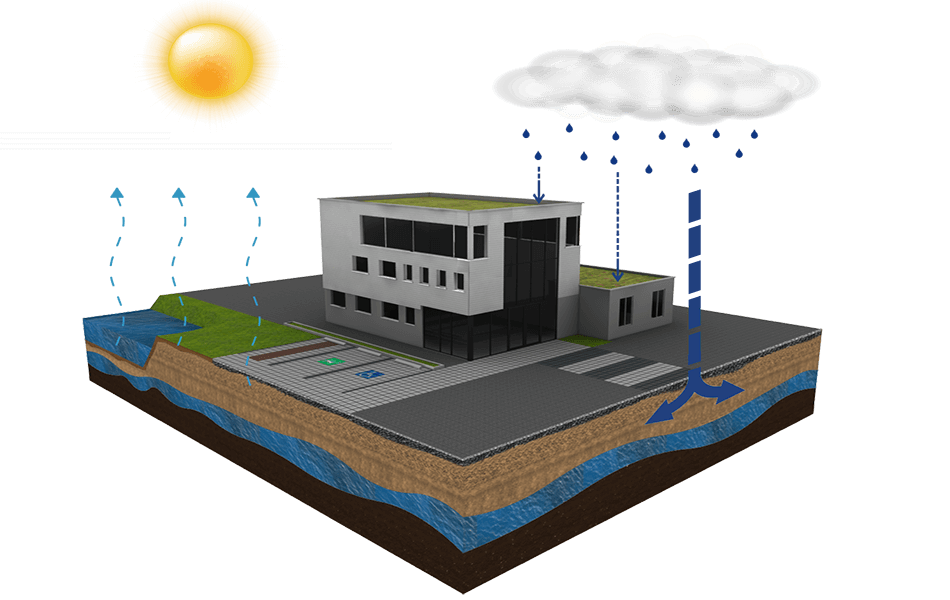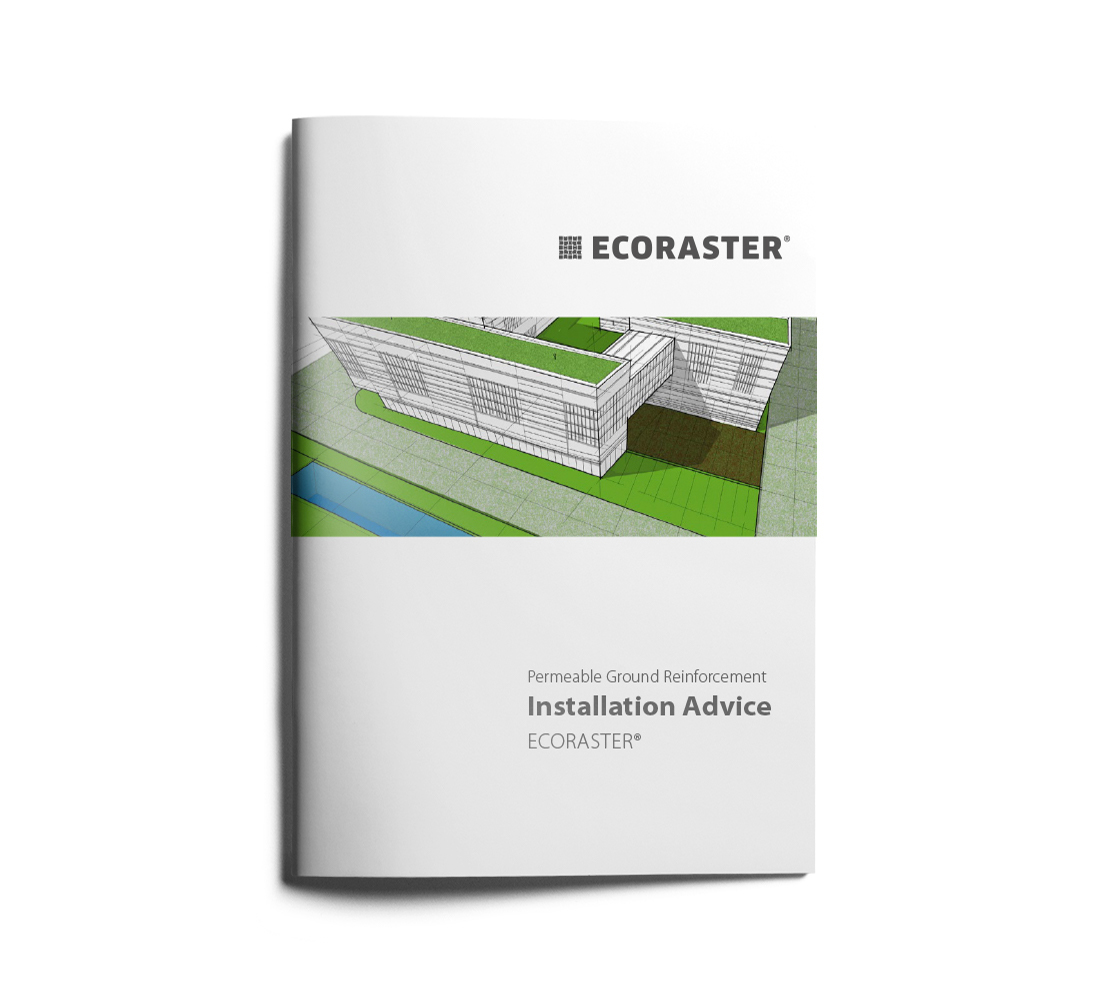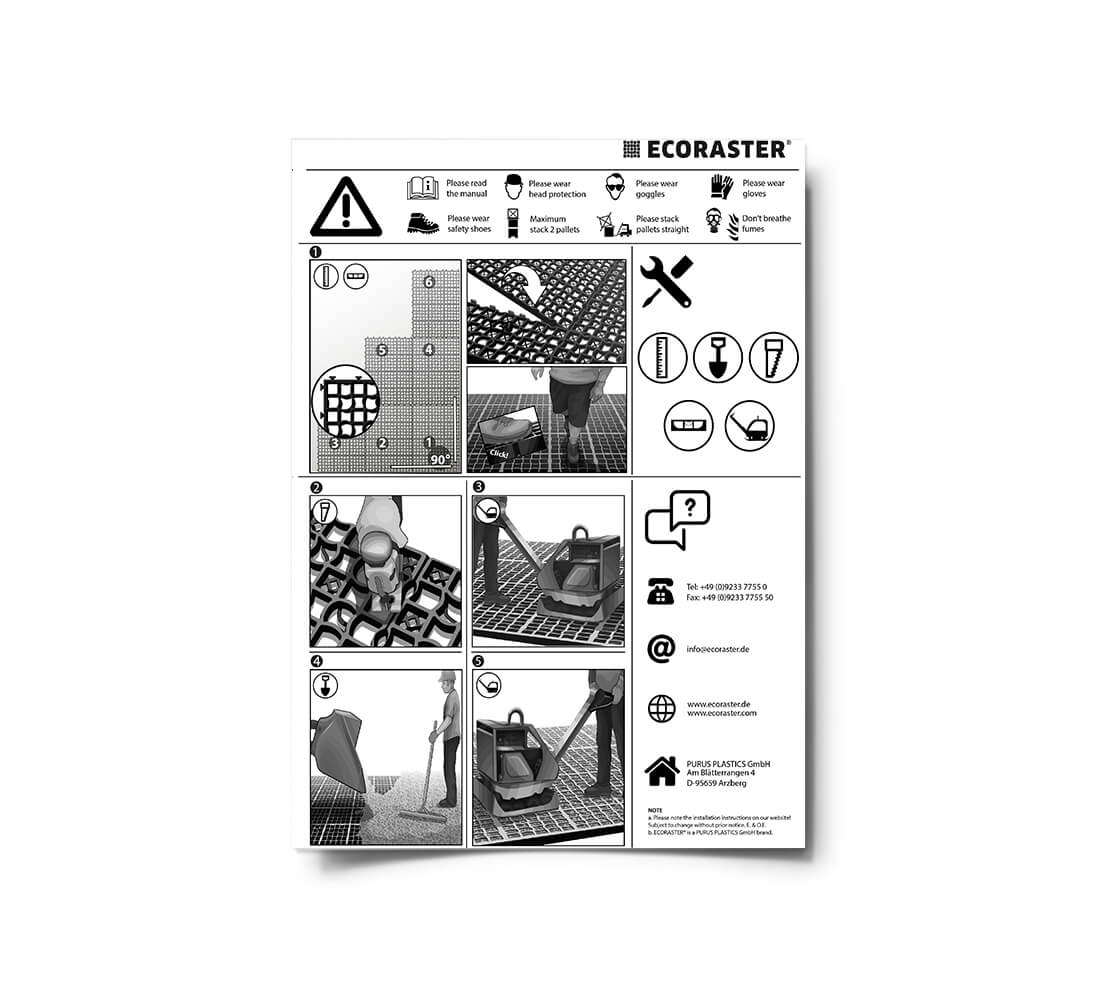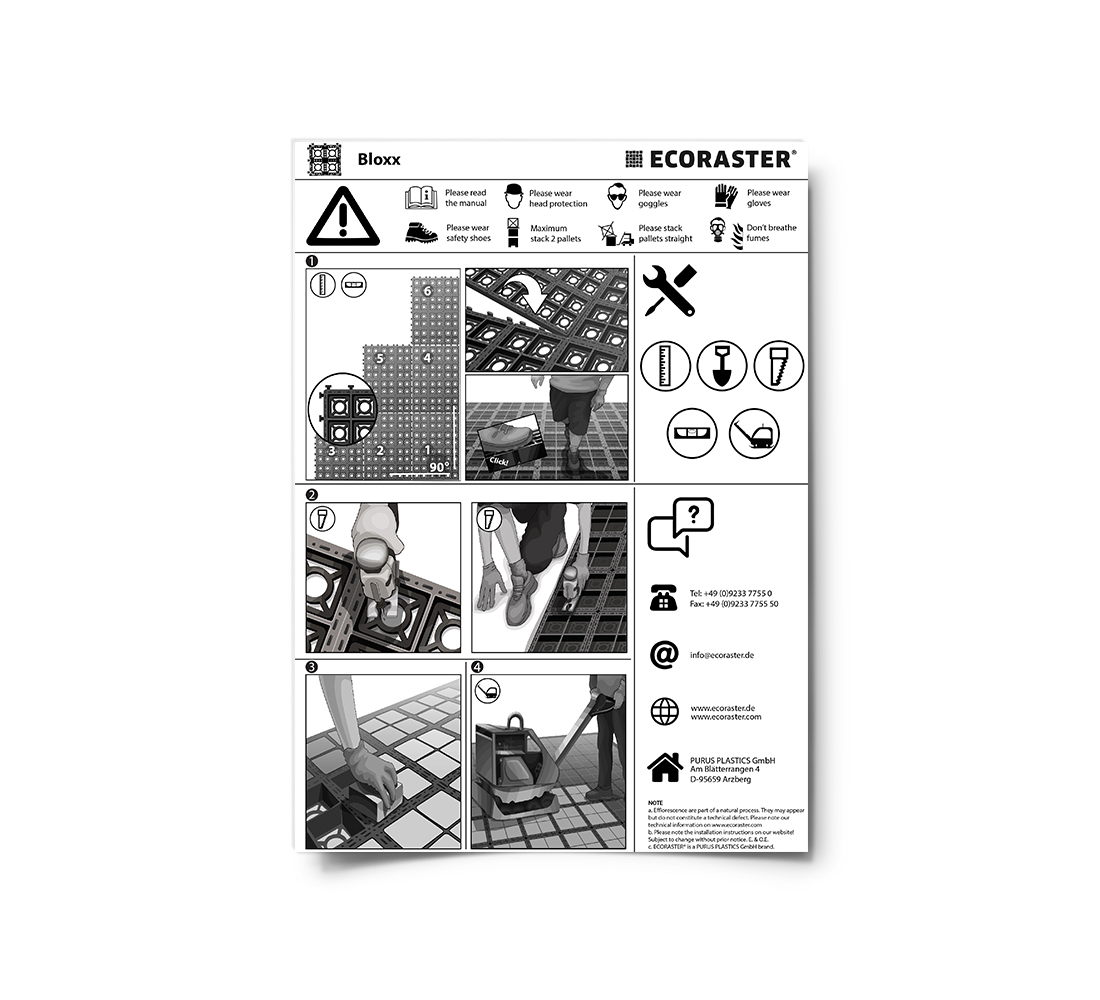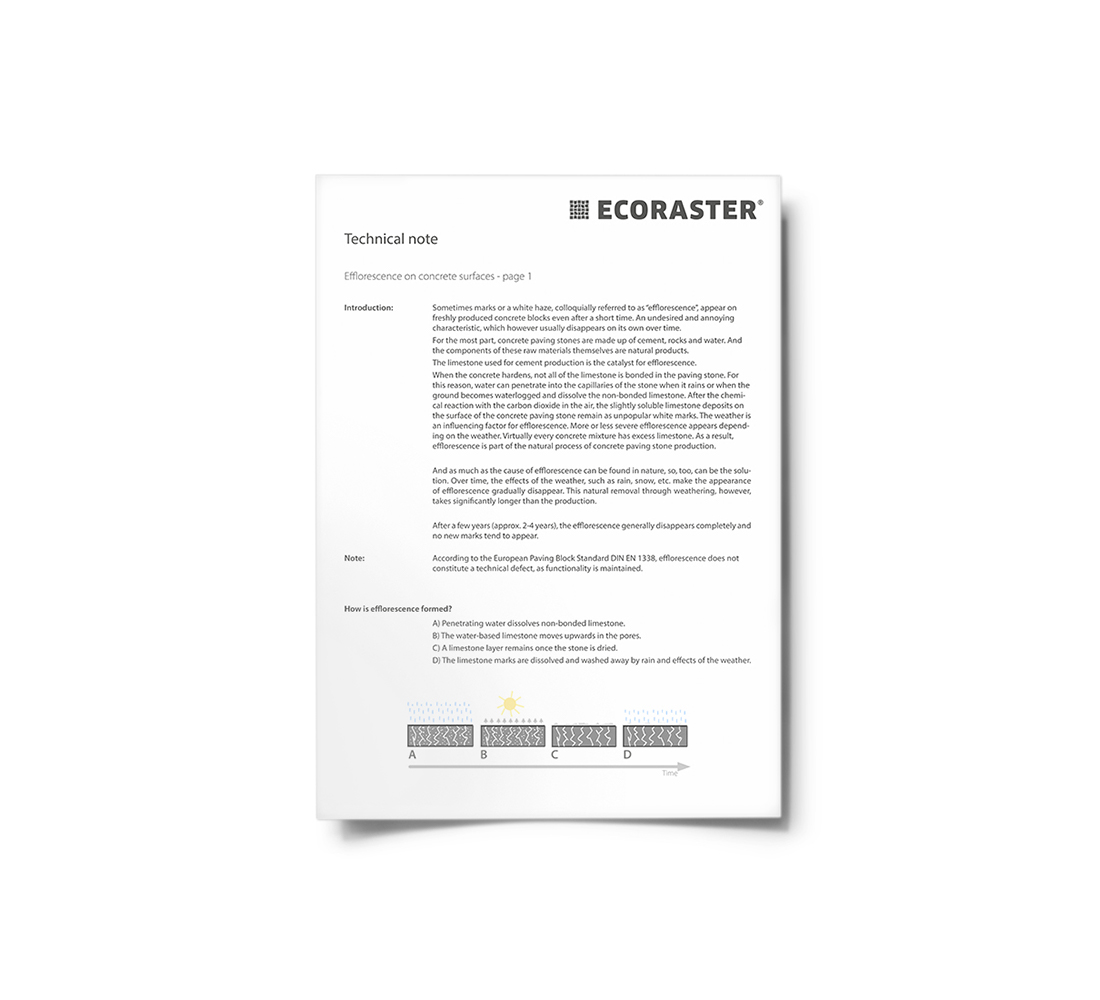Permeable ground stabilization offers ecological and economic benefits.
How to protect land for the long term while making it usable.
Overflowing drainage systems, flooded city centers and expensive rainwater retention projects are testament to the fact that permeable ground stabilization is not just a fashionable trend, but a necessity. Especially in our residential and traffic areas, permeable surfaces make a valuable and sustainable contribution to mitigating the ecological and economic consequences of heavy rainfall or hot temperatures.
The future-proof solution!
Maintain natural characteristics
If more water can be stored in the ground, there is less pressure on drainage systems and less water in our rivers. This drastically reduces the risk of flooding after heavy or sustained rain.
Creating durable and dependable areas
While permeable surfaces offer natural drainage characteristics, they are not particularly robust. Our ECORASTER ground stabilization systems convert point loads into surface loads. The result: areas without puddles or ruts.
Saving ancillary costs and charges
The smaller the sealed area, the lower the cost for the statutory precipitation tax. In most cases, costly drainage or expensive ground leveling is not necessary for permeable projects.
Fewer “heat islands”
Permeable surfaces allow for rain water to evaporate and noticeably reduce ambient temperatures (evapo-transpiration). The sun’s radiation is absorbed and only partially reflected. In addition, an “open area” binds particulate matter and reduces pollution.
The perfect ground.
In this habitat, rain can drain away without restrictions, is filtered through the ground and enriches the groundwater. This ground can absorb up to 200 liters of rainwater per square meter and meter of depth.
After this, the water evaporates from exposed surfaces. This process constitutes the natural water cycle.
Viable and sustainable.
The ground can absorb large quantities of water at times of heavy rain and consequently reduce surface runoff and the risk of flooding. The retention of areas with high water storage capacity must therefore be our number one goal to reduce flood peaks in the pre-flooding system and relieve the pressure on surface and other drainage systems. Especially in growing residential areas, in which the existing drainage system cannot be expanded, this relief through permeable surfaces must be the priority. The term “sponge city” is sometimes used in this context, as the system absorbs water and releases it at a later stage. This adaptation in modern city planning reduces the risk of heavy rain and flooding and ensures that rain is absorbed where it falls. This is called “decentralized rainwater management” or “flood protection.”
